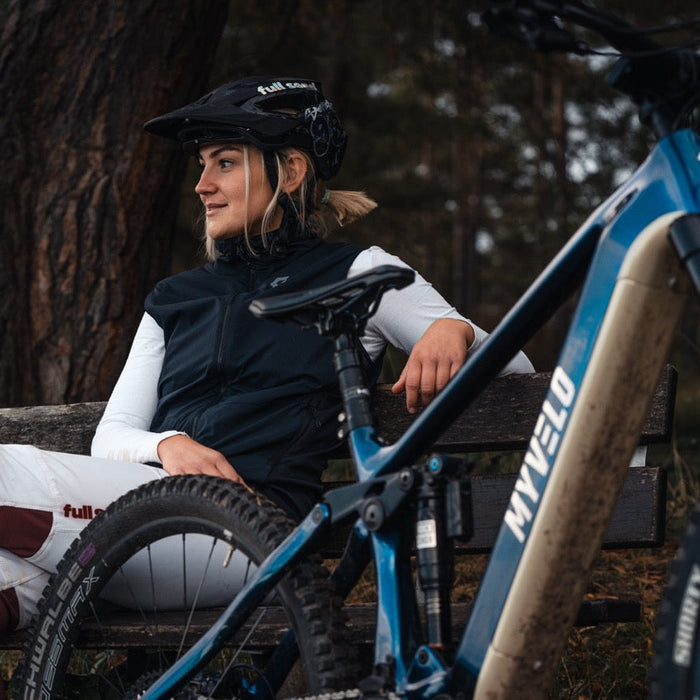
Was kostet ein guter Fahrradanhänger?
Ein Fahrradanhänger ist eine sinnvolle Erweiterung für alle, die mit dem Rad unterwegs sind und dabei Kinder, Hunde oder Gepäck transportieren möchten. Doch was kostet ein guter Fahrradanhänger eigentlich?

Helmet use refers to the legal or regulatory requirement to wear a helmet when cycling or using other means of transport. Helmet use may vary depending on the country, region or type of transport.
In many countries, there is no general helmet requirement for cyclists on public roads. However, cyclists are often required or strongly encouraged to wear a helmet to increase their safety on the road . In some countries, helmets may be compulsory, particularly for children.
It is important to check local laws and regulations to see if a particular region requires cyclists to wear a helmet. Even if helmets are not required, wearing a helmet is still highly recommended to reduce the risk of injury in the event of an accident.
It should be noted that the helmet requirement may vary depending on the means of transport. For example, in some countries there is a helmet requirement for motorcyclists or e-scooter users. In such cases, wearing a helmet is required by law.
Helmet requirements when cycling vary from country to country, and some countries have specific regulations for different age groups or groups of cyclists:
Australia: In Australia, helmets are compulsory for cyclists in all states and territories. This applies to all age groups.
New Zealand: In New Zealand, helmets are compulsory for all cyclists, regardless of age.
Canada: In Canada, helmet laws vary by province and territory. Some provinces have helmet laws for all cyclists, while others only require them for certain age groups.
United States: There is no nationwide helmet law for cyclists in the United States. However, many states and municipalities have their own regulations regarding the wearing of helmets while cycling, especially for children.
Spain: In Spain, cyclists must wear a helmet outside urban areas and on rural roads. There is no general helmet requirement within cities.
Finland: In Finland, helmets are compulsory for cyclists under 15 years of age.
In Germany there is currently no obligation to wear a helmet when cycling.
The use of helmets in skiing has evolved and increased over the years, especially in terms of the safety of skiers and snowboarders. In recent decades, the acceptance and prevalence of ski helmets has increased.
In the 1980s and 1990s, some skiers and snowboarders began to wear helmets voluntarily, especially in professional sports and in extreme sports such as freestyle or freeride. This development was driven by improvements in helmet design technology and a wider awareness of the safety benefits.
In recent years, attitudes towards ski helmets have continued to change. Many ski resorts and organizations now recommend or even require that children wear helmets. Adult skiers and snowboarders also wear helmets more frequently for safety reasons and to protect themselves from head injuries in the event of a fall.
Similar to the skiing sector, there may be a change in society's perception regarding the obligation to wear a helmet when cycling.

Ein Fahrradanhänger ist eine sinnvolle Erweiterung für alle, die mit dem Rad unterwegs sind und dabei Kinder, Hunde oder Gepäck transportieren möchten. Doch was kostet ein guter Fahrradanhänger eigentlich?

Ein JobRad kann sich finanziell und gesundheitlich lohnen. Mit einem JobRad Rechner lässt sich die individuelle Ersparnis schnell und einfach berechnen. Wer von steuerlichen Vorteilen profitieren und gleichzeitig ein hochwertiges Fahrrad nutzen möchte, sollte sich die Leasingoption genauer anschauen.

Fahrradpedale zu wechseln ist eine einfache, aber essenzielle Wartungsaufgabe, die jeder Radfahrer selbst erledigen kann. Ob für ein Upgrade, den Austausch abgenutzter Pedale oder den Wechsel zwischen Klick- und Plattformpedalen – mit der richtigen Anleitung gelingt der Wechsel problemlos.